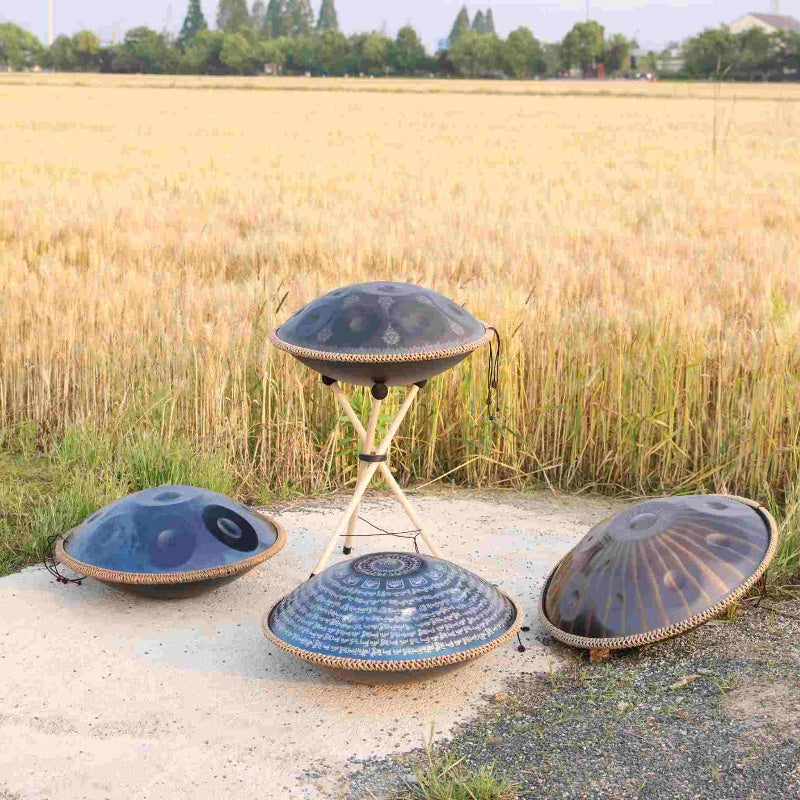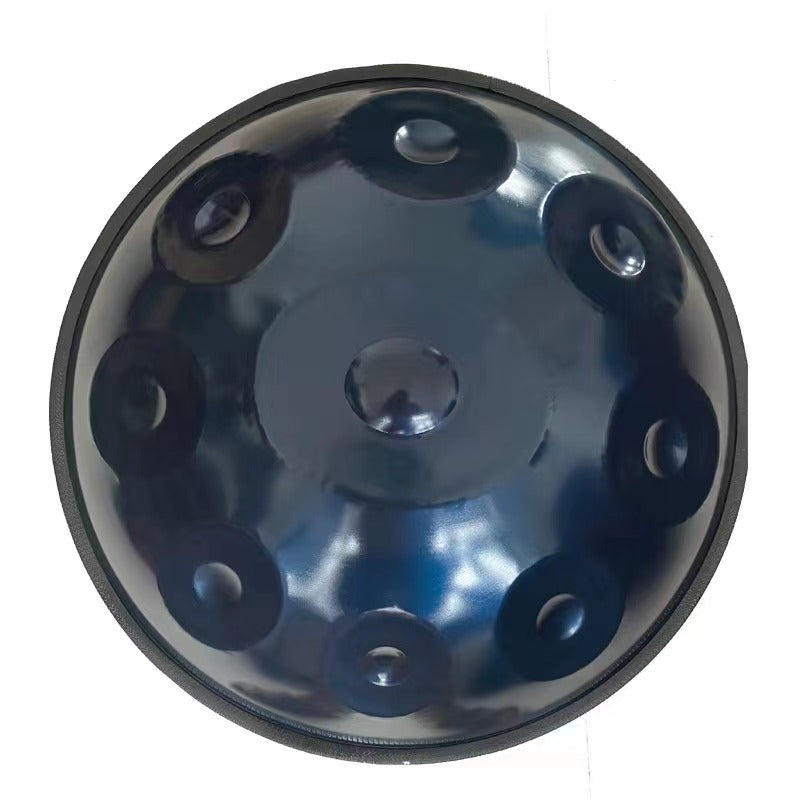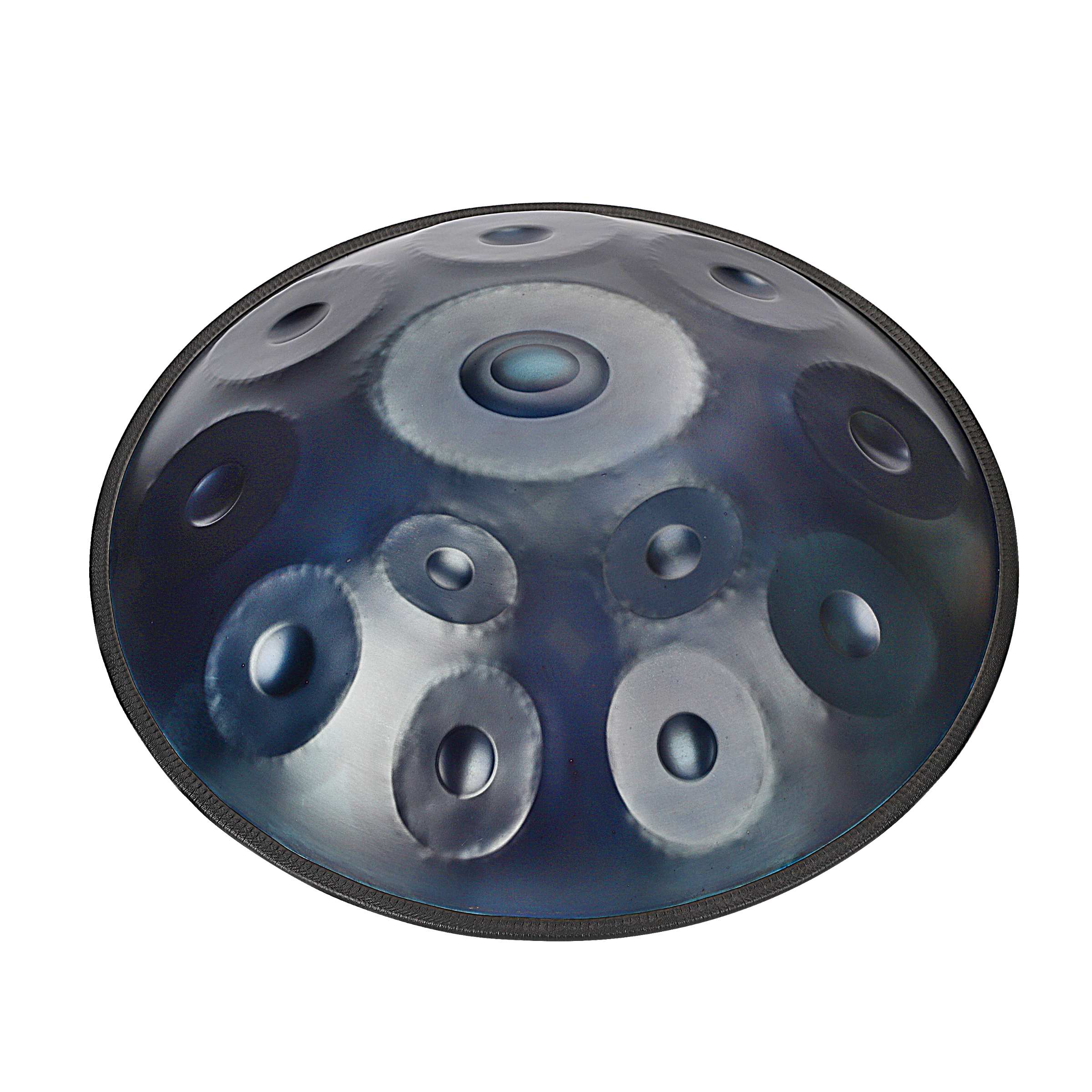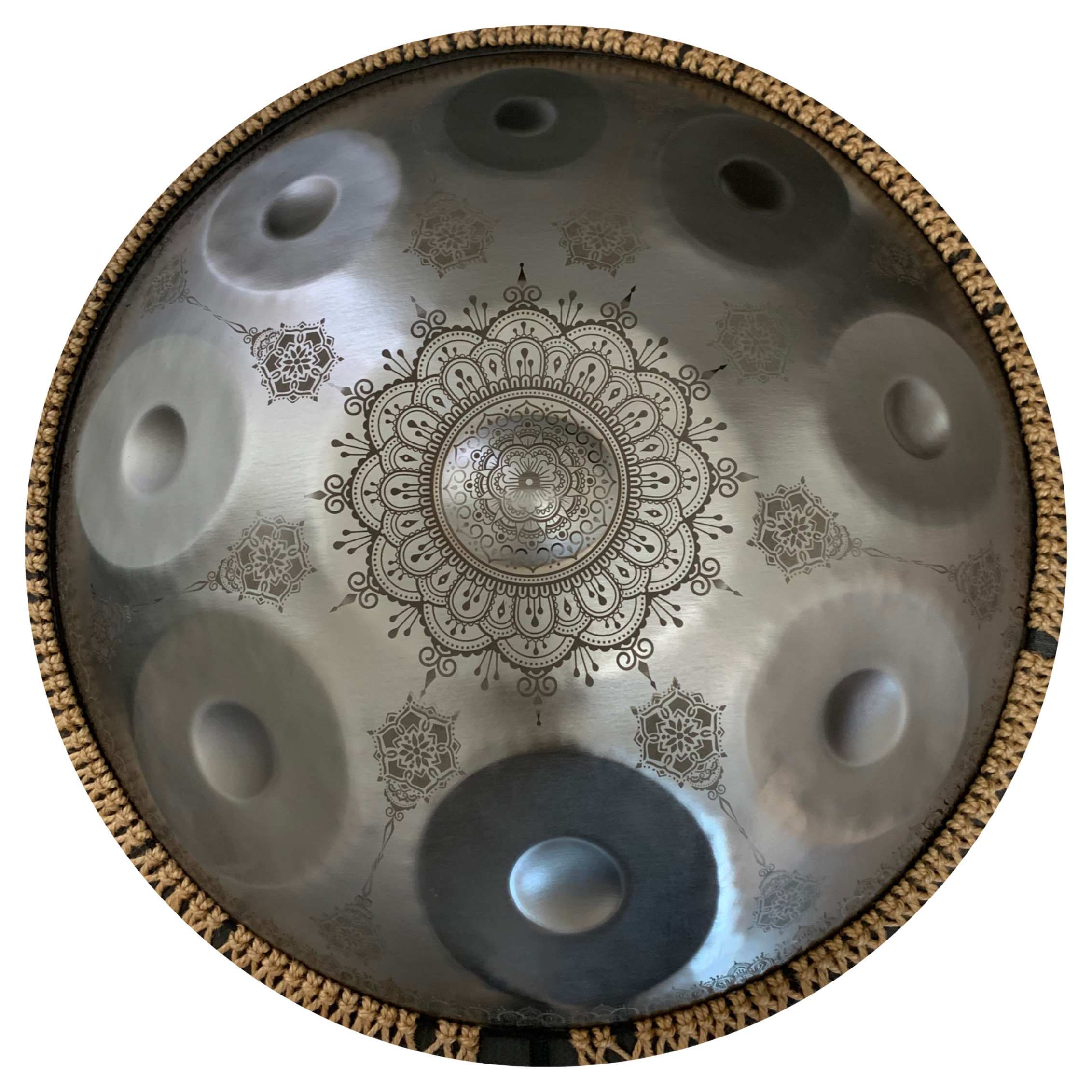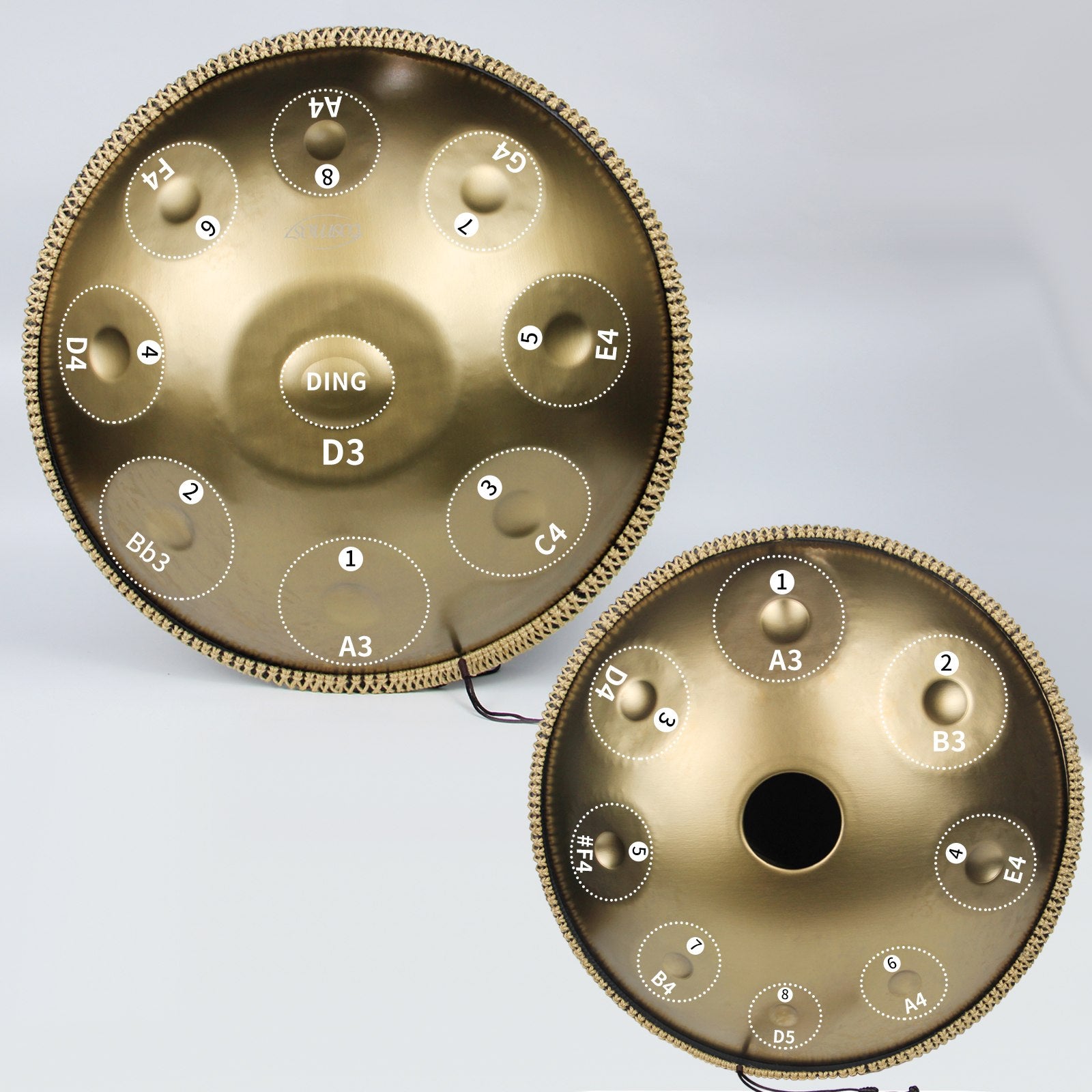The handpan is a captivating and unique percussion instrument, known for its enchanting sound and meditative qualities. As more people discover the handpan, it has gained popularity among musicians and hobbyists alike. For beginners, the handpan may seem mysterious and complex, but with the right approach, learning to play can be a deeply rewarding experience.
Whether you’ve just purchased your first handpan or are considering investing in one, you might be wondering: “Where do I start?” This comprehensive guide is designed to help you begin your handpan journey, covering the basics and offering tips to get you playing in no time.
1. Understanding the Basics of the Handpan
Before you start playing, it's essential to understand the fundamental structure of the handpan. A handpan is typically made from two metal shells, with a top side featuring multiple “tone fields” and a bottom side containing a resonance hole, known as the "Gu" hole.
The Ding: At the center of the top shell is the largest tone field, called the “Ding.” This central note usually produces a deep, resonant sound, often serving as the root note of the scale.
Tone Fields: Surrounding the Ding are several smaller tone fields, each tuned to a specific note. The number of tone fields can vary depending on the handpan, but most beginner instruments have between 7 to 9 notes.
The Gu Hole: The bottom shell of the handpan has a hole called the Gu, which helps create resonance and deep bass-like tones. Striking the Gu in certain ways can produce percussive sounds that add rhythm to your playing.
2. Choosing the Right Handpan for Beginners
As a beginner, selecting the right handpan is crucial to your learning experience. There are various scales and tunings available, and it’s important to choose a scale that suits your musical preference. Most beginner-friendly handpans are tuned to a diatonic scale (such as D minor), which provides a harmonious set of notes that are easy to play together.
Scale Selection: For beginners, scales like D Minor, Celtic Minor, or Integral are often recommended due to their soothing and balanced sound. These scales are intuitive, and the notes naturally complement each other, making it easier to create melodies.
Instrument Quality: Make sure to invest in a well-crafted handpan, even if it means spending a bit more. Poorly made instruments can have inconsistent tuning, which will make learning more challenging and frustrating. Look for handmade instruments from reputable makers, as they offer superior sound quality and craftsmanship.
3. Basic Playing Techniques
Now that you understand the structure of the handpan, it’s time to learn the basics of playing. Unlike many other percussion instruments, the handpan is played with the hands and fingers, not sticks or mallets. This allows for a more intimate and expressive playing style.
Hand Positions and Finger Techniques
Fingertip Strikes: The most common technique is to use your fingertips to gently strike the tone fields. Light, relaxed taps will produce clean and resonant tones. You don’t need to hit the handpan hard—let the natural resonance of the metal do the work.
Slaps and Taps: For more percussive elements, you can use the palm of your hand or the side of your thumb to produce rhythmic slaps. Taps on the Gu hole also create bassy, drum-like sounds.
Gliding Touch: Some advanced techniques involve gliding your fingers or palm across the tone fields to produce a soft, continuous ringing sound. This adds texture to your playing and enhances the instrument's ethereal sound.
Finding the Sweet Spot
Each tone field on the handpan has a “sweet spot”—the ideal place to strike to get the best sound. Typically, this is near the edge of the tone field, not directly in the center. Spend time exploring different areas of the tone fields to understand how they respond to your touch.
4. Basic Rhythms and Patterns
Once you’re comfortable striking the handpan, you can start to experiment with simple rhythms and patterns. Begin by playing slow, even strikes on different tone fields to get used to the instrument's sound. Gradually, try to create a rhythmic flow.
4/4 Rhythms: A simple 4/4 time signature is a great starting point. Play a steady beat, alternating between the Ding (center note) and one or two other tone fields. This will help you get a sense of timing and coordination.
Layering Tones: As you become more familiar with the handpan, you can experiment with layering tones by playing multiple notes in quick succession. Start with slow, deliberate patterns, and then speed up as you gain confidence.
Incorporating the Gu Hole: The Gu hole on the bottom shell can be struck to create bass tones or even more percussive sounds. Combine these with the higher-pitched tone fields on top to add complexity and depth to your rhythms.
5. Improvisation and Melodic Playing
One of the most beautiful aspects of the handpan is that it naturally lends itself to improvisation. You don’t need to have a deep understanding of music theory to create soothing, melodic music. Simply follow your intuition and let the instrument guide you.
Start Simple: Begin with just two or three notes, playing them in different combinations and rhythms. This will help you get a feel for the instrument without overwhelming yourself.
Explore Dynamics: As you become more comfortable, start to explore the dynamics of your playing. Experiment with soft, delicate strikes as well as more forceful hits. The handpan responds well to variations in touch, allowing you to express a wide range of emotions.
Building Layers: Improvisation is all about building on simple ideas. Start with a basic rhythm or melody and gradually add more layers as you feel comfortable. The beauty of the handpan lies in its ability to create rich, harmonious soundscapes.
6. Handpan Care and Maintenance
To ensure your handpan lasts for many years, proper care and maintenance are essential.
Cleaning: After playing, use a soft cloth to wipe down your handpan to remove any oils or dirt from your hands. Occasionally, you can use a light oil (such as coconut oil) to condition the metal and protect it from rust.
Storage: Always store your handpan in a safe, dry place when not in use. Avoid exposing it to extreme temperatures or humidity, as these can affect the tuning of the instrument.
7. Finding Resources and Communities
The handpan community is growing rapidly, and there are many online resources available to help you on your journey. Consider joining a handpan group on social media, where you can connect with other players, share tips, and even find local handpan gatherings or workshops.
Tutorial Videos: Many handpan players upload free tutorials on YouTube, offering step-by-step guidance on various techniques and playing styles.
Workshops and Teachers: If you’re serious about learning, consider attending a workshop or hiring a private handpan teacher. Hands-on instruction can accelerate your progress and help you develop good habits early on.
Conclusion
Learning to play the handpan is an incredibly fulfilling journey. With its soothing tones and intuitive playing style, it’s an instrument that anyone can enjoy, regardless of their musical background. Start by mastering the basics, explore rhythms and melodies, and don’t be afraid to improvise. With time, practice, and patience, you’ll be creating beautiful music that resonates deeply with both you and your listeners.
Whether you’re playing for relaxation, meditation, or performance, the handpan offers endless opportunities for expression and creativity. Happy playing!


